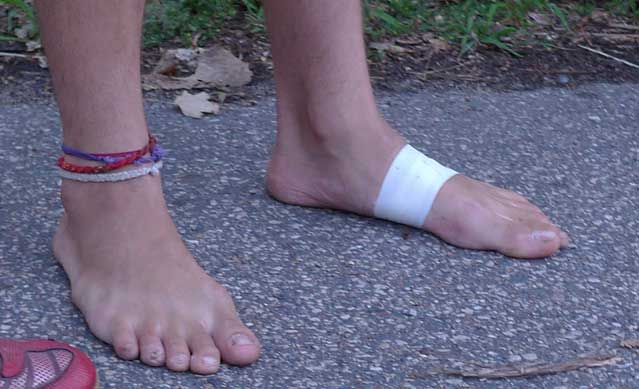Blisters crop up when there’s friction between your skin and your shoe. They’re especially common among runners, but all types of athletes are susceptible. Here’s how to treat your blisters and return to training.
��
If the blister is in a spot where it will likely tear (like the bottom of your foot)…
Pop it. Wash your hands, use a sterilized needle to drain the blister by poking a hole to one side, and compress the blister to push out the fluid. If the liquid isn’t clear or you see red streaks (a sign of infection), see your doctor. Do not tear off the loose, dead skin, which can lead to an infection. Finally, clean the area with antibacterial soap, cushion with a , which you can make by cutting the center out of a small piece of , and cover with a bandage. At this point, it’s usually OK to run. If the blister becomes irritated again, wait a couple days for it to harden and become less sensitive.
��
If you don’t think the blister will tear on its own…
Don’t pop it. Breaking the skin will increase the chance of infection. Instead of popping the blister, protect the area with either a or a donut pad. This will reduce additional friction so you won’t agitate the area further.
��
If you don’t see a blister…
Reduce your risk of getting one. To avoid blisters, keep your feet dry with . Sweat can turn skin soft and white, like when you’ve been in the tub too long. Add in heat and friction from movement, and you’ve got the perfect environment for a blister. Also, choose a shoe that fits properly. If it rubs in the store, it’s going to rub on the road.
Related Articles


